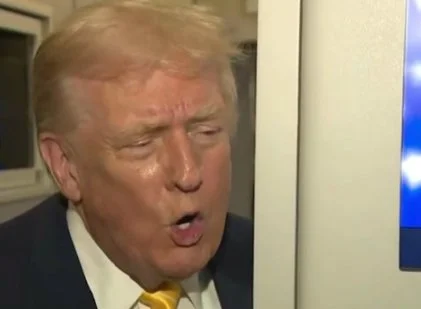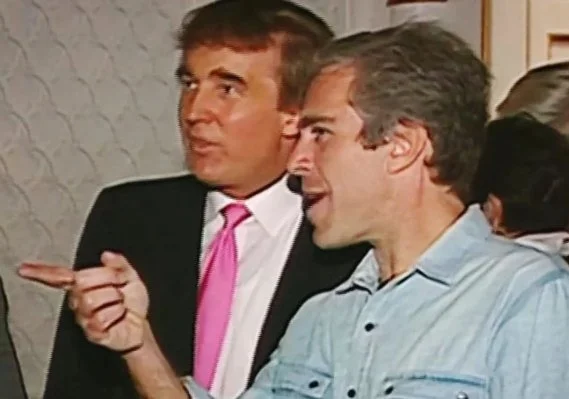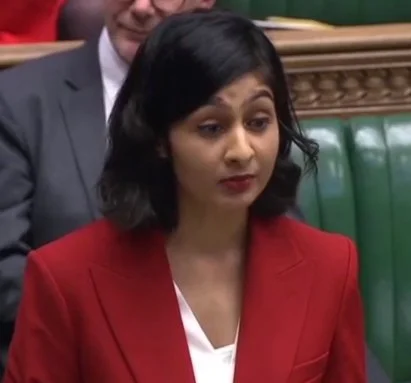How Donald Trump Can Be Branded a Fascist to His Face and Smile Back: A Political Psychology Analysis
Donald Trump has often responded to direct insults with disarming smiles or performative calm. When New York Mayor-elect Zohran Mamdani agreed he is a fascist to his face, Trump appeared unfazed. This essay explores why such confrontations do not land as expected, examining the psychological, rhetorical and strategic patterns that shape Trump's reactions.
When Zohran Mamdani affirmed Donald J. Trump as a fascist during a public meeting and Trump responded with a smile rather than anger, it produced a jarring moment for observers. To many people, being directly labelled a fascist is a deeply offensive accusation. It carries moral condemnation, historical weight and social stigma. Yet Trump did not recoil. He did not lash out. He did not immediately counterattack. Instead, he appeared almost pleased. This surprising reaction can be understood through three intersecting frameworks: Trump’s ego structure, his approach to public conflict and his tendency to interpret criticism through a lens of attention rather than morality.
Understanding the psychology behind this behavior requires separating individual moral judgment from political analysis. The goal is not to label Trump as fascist or not, nor to endorse Mamdani’s statement. Instead, the aim is to understand the cognitive and emotional processes that make Trump’s outward reaction appear disconnected from the content of the criticism itself.
1. Trump’s ego is structured around dominance, not ideology
It can be argued Trump interprets social interactions through dominance hierarchies rather than moral or ideological categories. For most people, ideological labels like fascist, socialist or authoritarian trigger emotional reactions because they carry moral value. For Trump, the labels themselves matter less than whether the interaction affirms or challenges his sense of personal power.
Trump’s self-concept appears to be built around a need to maintain status. When he is face to face with a critic, the key question for Trump is not what the critic believes about him but how he can frame the moment as evidence of his own importance. From his perspective, Mamdani calling him a fascist during a high-profile meeting does not necessarily signal disrespect. Trump may interpret it as a sign that an adversary felt compelled to confront him directly, which he reframes as validation of his influence.
This is consistent with research on narcissistic personality structures. People with high narcissistic traits often respond to explicit criticism by reframing it as envy, obsession or evidence of their significance (Campbell & Miller, 2011). In that schema, confrontation is affirmation. Trump’s smile may therefore reflect a psychological reframing of the moment as victory rather than insult.
2. Trump processes conflict as performance rather than personal threat
Another useful lens is Trump’s lifelong immersion in media culture. Trump has demonstrated an unusual comfort with televised conflict, often treating combative exchanges as entertainment instead of personal attack. In the world of reality television, wrestling promotions and tabloid media that shaped much of his public persona, conflict is not evidence of failure. It is a driver of attention and engagement.
Mamdani’s accusation became a moment of theater. Trump’s smile can be understood as his performer instinct activating. He knows that reacting with anger might make him appear rattled or weak. By smiling, he maintains the role of the unflappable protagonist. This aligns with Goffman’s theory of facework, which suggests that public figures engage in strategic emotional displays to protect their projected identity during social interaction (Goffman, 1959).
In other words, Trump was performing confidence. The content of the accusation was secondary. What mattered was the optics of dominance.
3. Ideological criticism does not always register as personal criticism
Calling Trump a fascist is a political and ideological accusation. But for Trump, political ideology has never been central to his identity. He has shifted positions many times. He has worked with individuals across ideological spectra when it benefits him. He often praises people who oppose him ideologically if they flatter him or can be used to advance his narrative.
As a result, ideological criticism does not produce the kind of emotional injury it might in a politician who sees themselves as a moral actor within a coherent ideological project. Trump’s political identity is narrative driven, not policy driven (Ott & Dickinson, 2019). The accusation of fascism, while severe in meaning, may have been interpreted by Trump as simply “left wing rhetoric” rather than as an indictment of his character.
Because he does not see himself through an ideological lens, the accusation does not hit him at the emotional level it might strike others.
4. Trump often reframes insult as submission
There is a pattern in Trump’s responses to critics. When confronted directly, he often later claims that the interaction shows that the critic respected him enough to meet with him. This is a form of cognitive reframing that protects his ego from acknowledging the criticism. From this perspective, Mamdani confronting him to his face may be interpreted by Trump as a kind of submission.
He may think: this person traveled to meet with me, sat across from me and argued with me. Therefore, I am central to the political landscape. I am the axis around which even my enemies must move.
This pattern is visible across many of Trump’s interactions with adversaries. He frequently reframes criticism as proof of his importance. His smile during the interaction with Mamdani may reflect this cognitive maneuver happening in real time.
5. The smile was a form of emotional armor
Finally, Trump’s smile can be interpreted as a form of emotional armor. When confronted with a threat to ego, individuals often deploy defensive displays to signal that they are unaffected. These displays can include smiling, laughing, dismissing or ignoring the threat.
Current research into political leadership under stress suggests that such displays can serve both internal and external purposes. Internally, they help maintain self coherence. Externally, they signal power and stability to observers.
Trump’s smile can therefore be seen as a dual purpose defense:
Internally, it protects his self image.
Externally, it protects his public image.
The content of the criticism was severe, but the emotional response was filtered through a system designed to maintain dominance, not address moral accusation.
Simply Put
The moment when Zohran Mamdani affirmed Donald Trump as a fascist to his face and Trump simply smiled is a useful case study in political psychology. It appears counterintuitive only if we assume that Trump processes ideological criticism in the same way most political actors do. He does not. Trump’s reactions are shaped by a dominance oriented ego structure, a media trained instinct to turn conflict into performance and a tendency to interpret confrontation as evidence of his own centrality. To Trump, the accusation may not have been felt as a wound but as a stage cue.
Understanding this is essential for interpreting his behavior accurately. It does not require moral judgment or ideological agreement. It simply requires seeing his reactions as the products of a unique psychological profile that prioritizes attention, dominance and narrative control over ideological coherence or emotional vulnerability.
References
Goffman, E. (1959). The presentation of self in everyday life. Doubleday.
Sources
Donald Trump branded a fascist to his face by Zohran Mamdani - and he sits there and smiles








